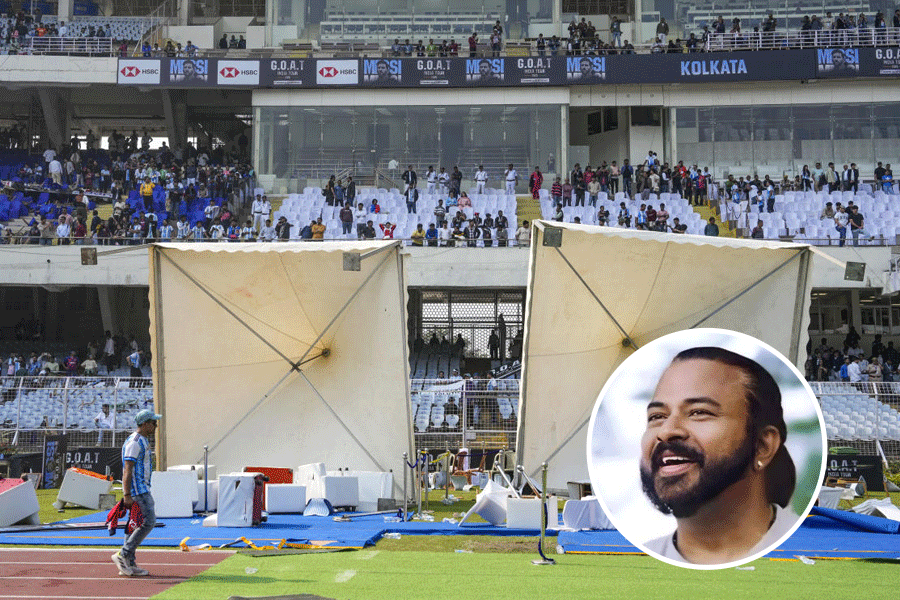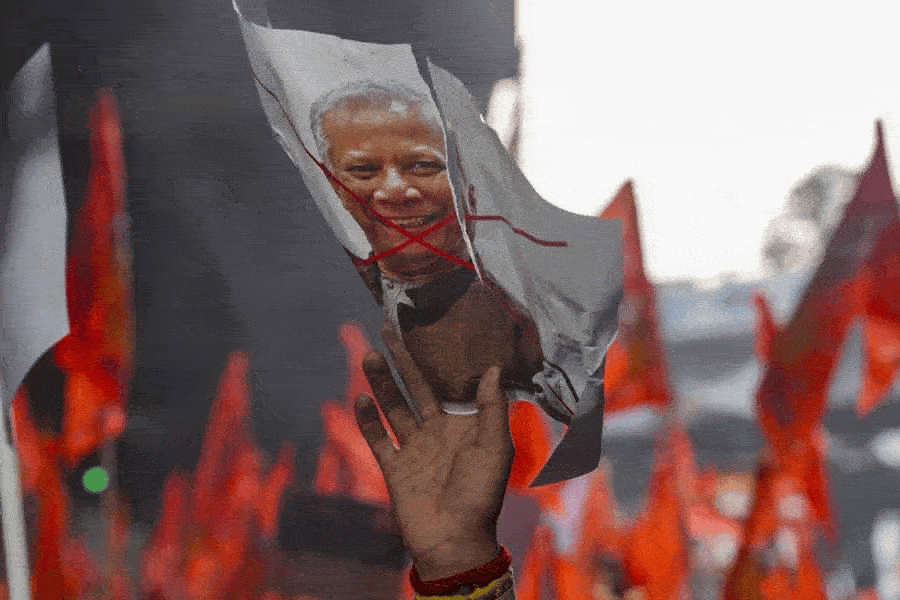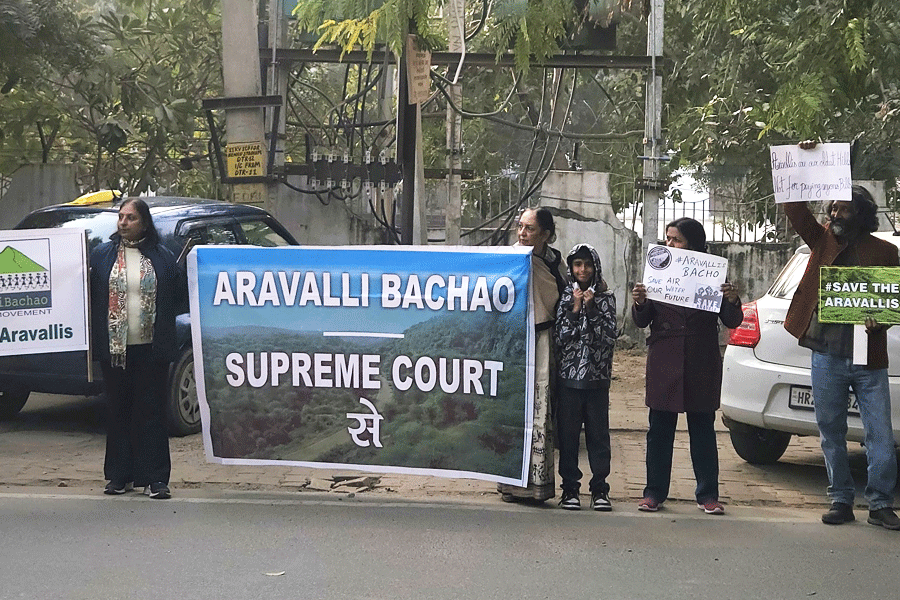.jpg)
POLITICAL VIOLENCE IN ANCIENT INDIA By Upinder Singh,Harvard, Rs 999
In this elegantly published work - embellished with visuals and maps - the historian, Upinder Singh, has examined an unconventional theme in history by elaborately exploring the predilections to and the nature and execution of political violence in ancient India (c. 600 BCE - 600 CE). She has minutely studied political violence perpetrated by the monarchical State. Challenging the much cherished notion that ancient India was invariably steeped in non-violent and accommodative traditions of rulership (in Buddhist, Jaina ethics and the dharmic kingship in Brahmanical Sanskrit treatises, particularly the Bhagvad Gita), she probes modern India's search for the roots of its non-violent ethos in remote antiquity, primarily by Mahatma Gandhi and Jawaharlal Nehru, who cited non-violence respectively in the Bhagvad Gita and Asoka's governing principles. The other contemporary iconic figure, B.R. Ambedkar, too, championed Buddhism primarily for its non-violent ethics in sharp contrast to the hostilities of varna-jati norms directed towards the lower social orders.
These preliminaries then take the reader through an elaborate analysis of political violence by citing a wide array of primary sources: textual, epigraphic, numismatic and visual. Divided into five major chapters, besides the Introduction and Conclusion (excellent bibliography too), the book tracks the contours of political violence (violence in the varna-jati system and gender relations not the author's agenda here) in three stages: Foundation (600-200 BCE), Transition (200 BCE-300 CE) and Maturity (300-600 CE); two more chapters deal with wars (with a thrust on the perceptions on righteous war and victory or dharma-yuddha/ vijaya) and the built-in hostility of the monarchy against forest-dwellers. The author's innovative use of narrative literature (Mahabharata, Ramayana, Asokavadana, Abhijnanasakuntalam, Raghuvamsam, Mudrarakshasa and Panchatantra) deserves a special mention, both for the contents and her research methodology.
Without cataloguing the drab details of accounts and representations of wars, the author probes into 'a history of ideas' regarding violence in ancient monarchies. She could have also delved into the martial spirit and capabilities of many non-monarchical groups (ganasamghas) and professional warriors (ayudhajivins of Panini), some of which gave stiff resistance to the Macedonian army. Asoka (c. 272-233 BCE), as an emblematic ruler for both the bloodbath in the Kalinga war and his eschewing of war in order to propagate dhamma, has figured prominently. However, Asoka's remorse (anutape) and authority (prabhave) appear simultaneously in RE XIII that also highlights the inevitability of death, destruction and deportation when an unconquered (avijita) area was conquered. Singh has rightly pointed out that all ancient utterances on polity, morality, religion and ethics (including the Jaina) accepted the impossibility of zero-violence in royal functions. The thrust was therefore on compassion through minimum violence and cruelty ( a-nrisamsya). The author here could have paid more attention to Sibaji Bandyopadhyay's Three Essays on the Mahabharata. The issue of whether the Brahmanical concept of a-nrisamsya was an appropriation of Asoka's insistence on the minimum use of violence, when unavoidable, could have come under her scholarly gaze. Susmita Basu Majumdar recently, in Studies in People's History (Volume 4), showed how a nascent monarchy in second century Chhattisgarh required diverse types of military functionaries. The forest was a site to subdue the foresters (aranyacharas/ atavikas) and to gather resources, but also for hunting which was a marker of the masculine power and grandeur of the ruler.
Singh has commented that Sita adored Rama's truthfulness and conjugal fidelity, but disapproved of his "violence - the taking of life without provocation, and recklessly". The author has elaborated on the Arthasastra (also the Nitisara) model of war, violence and the judicious use of the danda (rod of chastisement, including the army). Two points are missing in this exercise. First, there is little discussion on the espionage system which subjected everyone, particularly the king's own subjects, to royal suspicion and surveillance; spies did not merely collect information but as poison-giver (rasada) and desperado (tikshna) physically eliminated the thorns (kantaka) to the State. Second, the political economy of warfare - detailed by Kautilya who routinely sought economic benefits in wars - has been relegated to the background, probably because of the author's insistence on the culture and idea of violence in a historical background. This fine work sometimes treats political violence sans political economy.
In her Introduction, Singh cogently cited Gandhi ji's firm belief that the Bhagvad Gita was steeped in non-violence. Tagore had a different take on that. Airborne from Calcutta to Bushehr in 1932, he detested the aircraft: "As the aeroplane rose higher, our relationship with the earth became narrowed down from that of the five senses to one - of sight, and even that no longer intimate. In such a state of mind, I realized, man can grow cruelly destructive if he is out to rain bombs from the aeroplane. Then, delicate calculations as to the offence of the victims no longer paralyse his raised arms, for the very basis of that calculation has vanished.
The doctrines of the Gita are an aeroplane of this sort. They took the compassionate mind of Arjuna to that distant region from where the slayer and the slain, stranger and friend, could no longer be distinguished. Those hapless survivors - for them only remain the consolation: na hanyate hanyamane sarire."
Readers and this reviewer alike will look forward to Singh's further engagements on this subject.

.jpg)









